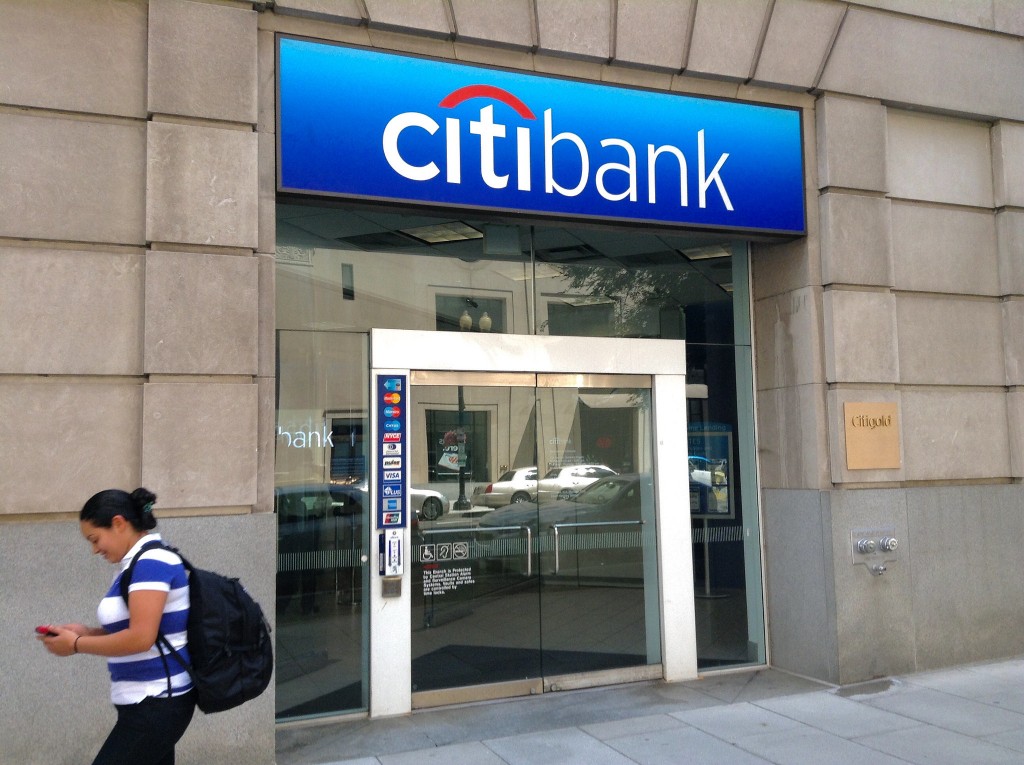Bank stocks offer better value in U.S. than Canada
Canada's leveraged banks may not have learned the lessons of the last financial crisis
Advertisement
Canada's leveraged banks may not have learned the lessons of the last financial crisis
 The most dramatic difference between the U.S. and Canadian bank stocks comes down to leverage. All of the U.S. banks have smaller leverage ratios, and usually much smaller ones, than the Canadian banks. On average, the U.S. banks have leverage ratios (assets/equity) of 9.0, whereas the average for the Canadian banks comes in at 19.1.
While it could be argued that the Canadian banks have better franchises than the U.S. banks, the leverage that the Canadian banks employ appears to indicate that they’ve not learned enough from the collapse of the U.S. real estate market in 2008.
First up, the following table provides stats on Canada’s bank sector.
The most dramatic difference between the U.S. and Canadian bank stocks comes down to leverage. All of the U.S. banks have smaller leverage ratios, and usually much smaller ones, than the Canadian banks. On average, the U.S. banks have leverage ratios (assets/equity) of 9.0, whereas the average for the Canadian banks comes in at 19.1.
While it could be argued that the Canadian banks have better franchises than the U.S. banks, the leverage that the Canadian banks employ appears to indicate that they’ve not learned enough from the collapse of the U.S. real estate market in 2008.
First up, the following table provides stats on Canada’s bank sector.
| Name | Market Cap (M) | Price | P/E | P/B | Yield | Leverage |
| Royal Bank (RY) | $147,709 | $101.33 | 13.8 | 2.25 | 3.59% | 18.29 |
| TD Bank (TD) | $137,775 | $74.51 | 14.1 | 2.05 | 3.22% | 17.87 |
| Bank of Nova Scotia (BNS) | $100,682 | $84.00 | 13.1 | 1.89 | 3.76% | 16.85 |
| Bank of Montreal (BMO) | $64,444 | $99.49 | 12.2 | 1.67 | 3.62% | 18.01 |
| CIBC (CM) | $50,435 | $114.72 | 10.4 | 1.78 | 4.53% | 20.67 |
| National Bank (NA) | $21,596 | $63.25 | 13.3 | 2.05 | 3.67% | 23.07 |
| Canadian Western Bank (CWB) | $3,201 | $36.23 | 15.9 | 1.49 | 2.65% | 11.64 |
| Laurentian Bank (LB) | $2,301 | $59.22 | 13.4 | 1.18 | 4.19% | 26.61 |
| Source: Bloomberg, November 22, 2017 | ||||||
| Name | Market Cap (M) | Price | P/E | P/B | Yield | Leverage |
| JPMorgan (JPM) | $337,500 | $97.27 | 13.9 | 1.45 | 2.30% | 9.92 |
| Bank of America (BAC) | $273,699 | $26.24 | 14.2 | 1.10 | 1.80% | 8.38 |
| Wells Fargo (WFC) | $266,107 | $54.04 | 13.8 | 1.48 | 2.90% | 9.36 |
| Citigroup (C) | $189,125 | $71.53 | 13.8 | 0.91 | 1.80% | 8.26 |
| Goldman Sachs (GS) | $93,289 | $237.24 | 12.2 | 1.20 | 1.30% | 10.71 |
| Morgan Stanley (MS) | $87,466 | $48.38 | 13.1 | 1.24 | 2.10% | 10.66 |
| US Bancorp (USB) | $86,011 | $51.83 | 15.3 | 2.00 | 2.30% | 9.31 |
| PNC Financial (PNC) | $62,806 | $132.00 | 15.9 | 1.48 | 2.30% | 8.08 |
| Capital One (COF) | $41,688 | $86.00 | 12.0 | 0.91 | 1.90% | 7.21 |
| SunTrust Banks (STI) | $27,439 | $57.64 | 14.6 | 1.22 | 2.80% | 8.49 |
| Fifth Third Bancorp (FITB) | $20,187 | $28.61 | 10.6 | 1.34 | 2.20% | 8.69 |
| KeyCorp (KEY) | $19,626 | $18.25 | 15.6 | 1.34 | 2.10% | 8.97 |
| Huntington (HBAN) | $14,712 | $13.61 | 16.2 | 1.53 | 3.20% | 9.53 |
| Comerica (CMA) | $13,689 | $78.71 | 17.5 | 1.71 | 1.50% | 8.96 |
| Source: Bloomberg, November 22, 2017 | ||||||
| Name | Price | P/B | P/E | Earnings Yield | Dividend Yield |
| Emera (EMA) | $48.42 | 1.77 | 18.13 | 5.51% | 4.67% |
| BCE (BCE) | $61.56 | 3.62 | 19.06 | 5.25% | 4.66% |
| CIBC (CM) | $114.72 | 1.78 | 10.42 | 9.61% | 4.53% |
| Power (POW) | $32.82 | 1.14 | 9.86 | 10.14% | 4.37% |
| Shaw (SJR.B) | $28.21 | 2.39 | 16.40 | 6.10% | 4.20% |
| TELUS (T) | $48.40 | 3.40 | 22.72 | 4.40% | 4.17% |
| Bank of Nova Scotia (BNS) | $84.00 | 1.89 | 13.08 | 7.70% | 3.76% |
| National Bank (NA) | $63.25 | 2.05 | 13.26 | 7.64% | 3.67% |
| Bank of Montreal (BMO) | $99.49 | 1.67 | 12.24 | 8.20% | 3.62% |
| Royal Bank (RY) | $101.33 | 2.25 | 13.84 | 7.26% | 3.59% |
| Source: Bloomberg, November 22, 2017 | |||||
Share this article Share on Facebook Share on Twitter Share on Linkedin Share on Reddit Share on Email